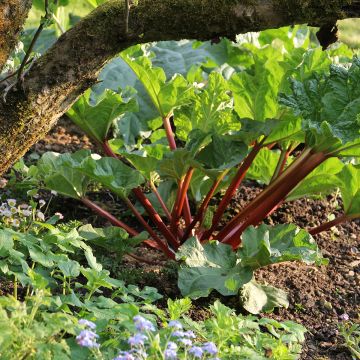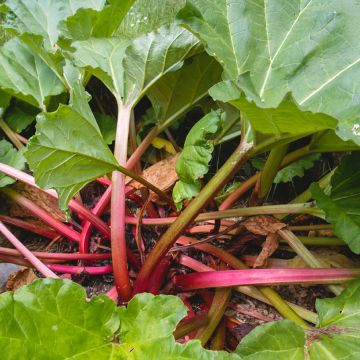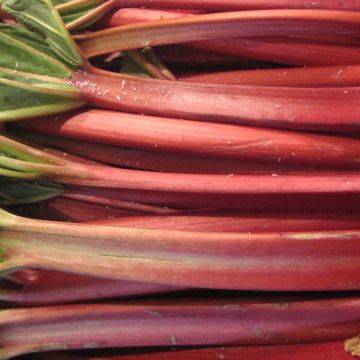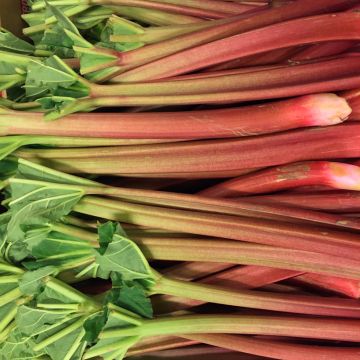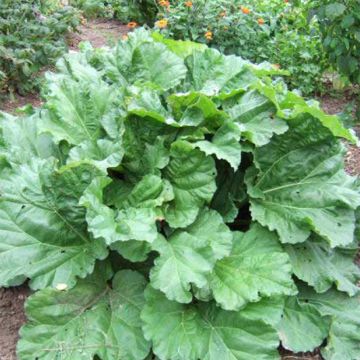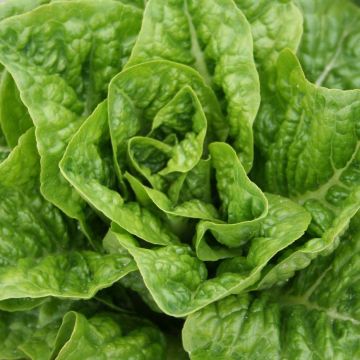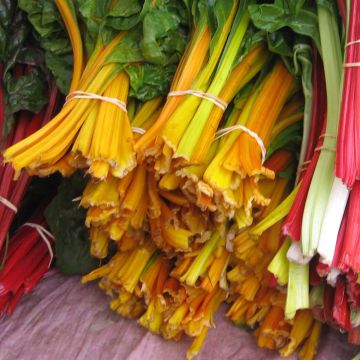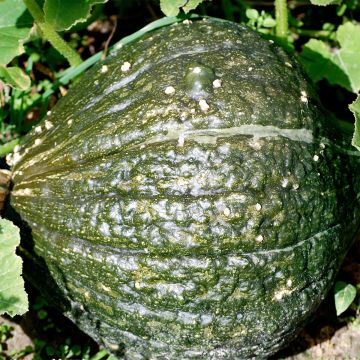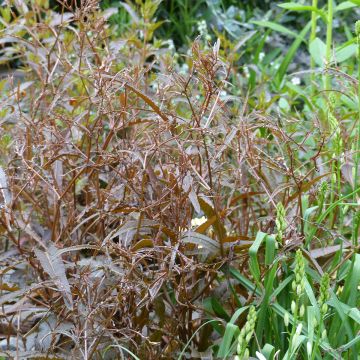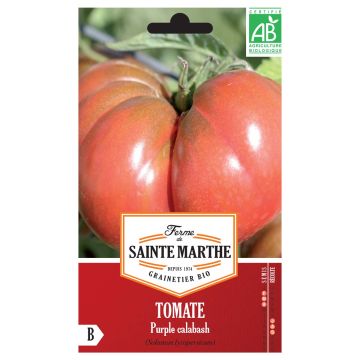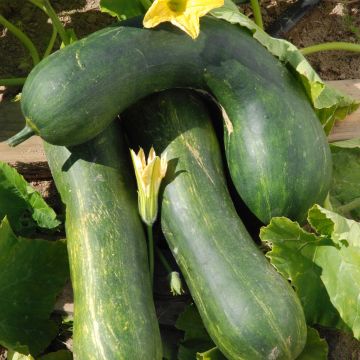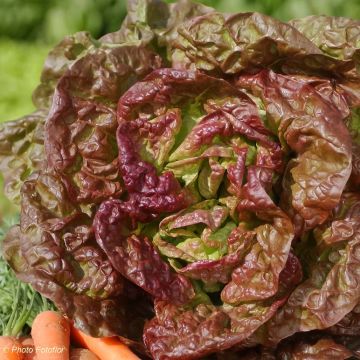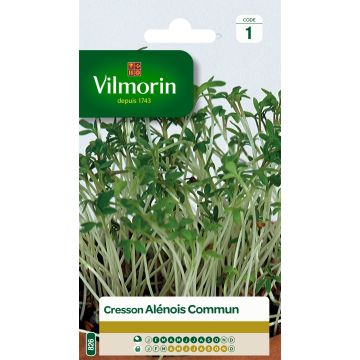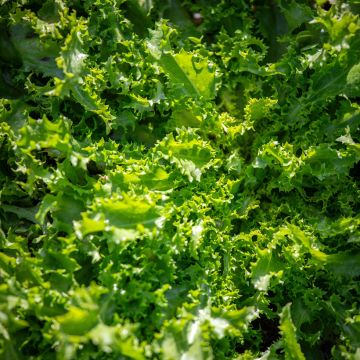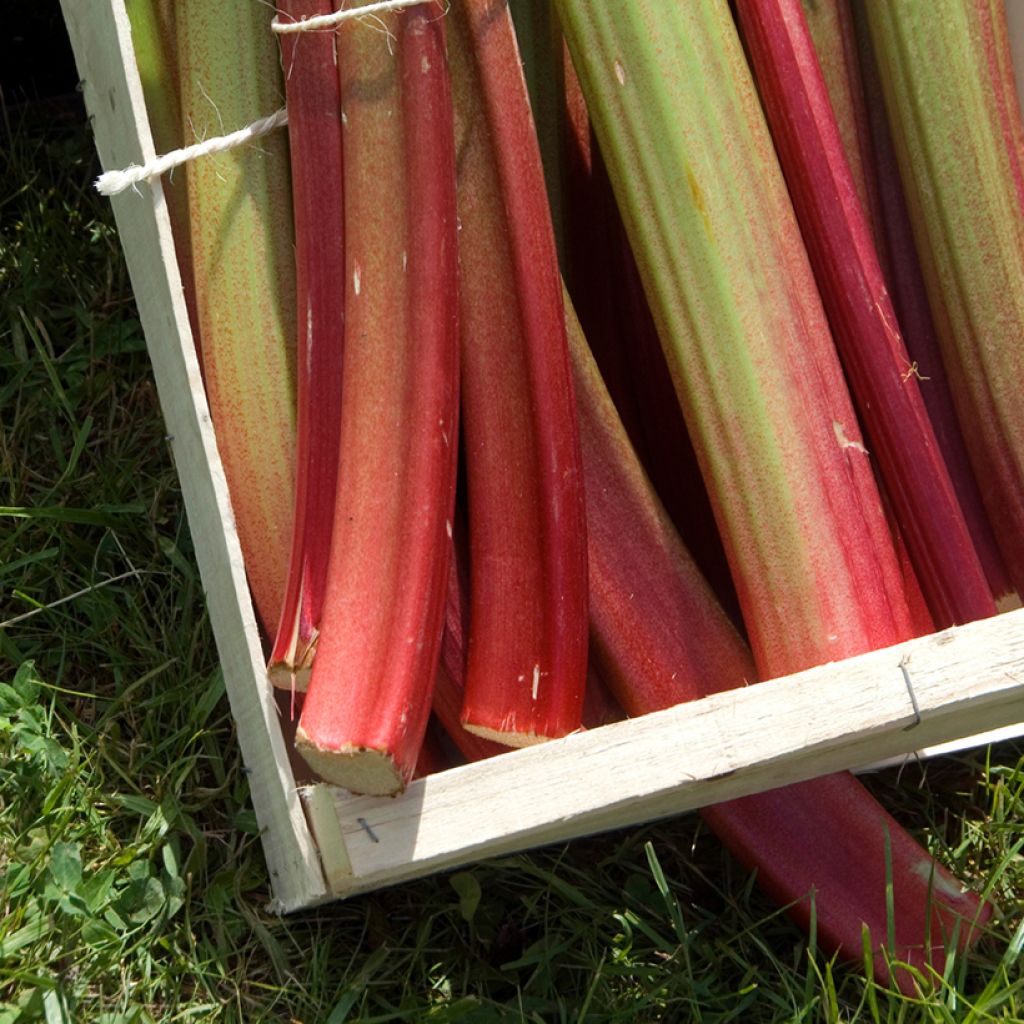

Rheum rhabarbarum Goliath - Rhubarb
Rheum rhabarbarum Goliath - Rhubarb
Rheum rhabarbarum Goliath (green)
Rhubarb
Why not try an alternative variety in stock?
View all →This plant carries a 6 months recovery warranty
More information
We guarantee the quality of our plants for a full growing cycle, and will replace at our expense any plant that fails to recover under normal climatic and planting conditions.
From €5.90 for pickup delivery and €6.90 for home delivery
Express home delivery from €8.90.
Description
The 'Goliath' rhubarb (Rheum rhabarbarum) is a variety appreciated by gardeners for its productivity, vigour, and cold resistance. Its large green stalks are ideal for making pies, compotes, and jams. It is a vigorous perennial plant, very hardy, highly ornamental, easy to grow in fertile, deep garden soil, slightly moist in summer.
Rhubarb (Rheum rhabarbarum) belongs to the Polygonaceae family and is native to temperate regions of Asia, particularly China and Tibet. In the wild, this species is often found in wet meadows and mountainous areas.
The 'Goliath' variety is known for its upright habit and vigorous growth, reaching a height of 1 metre and a similar spread. The leaves are broad, measuring up to 60 centimetres long. Each is carried on a thick, green stalk, which can be up to 70 centimetres long. This plant generally does not flower in cultivation, which is advantageous for focusing energy on the development of the edible stalks. In any case, it is recommended to prune the floral stems as soon as they appear. The leaves, although toxic if ingested, are decorative due to their imposing size. 'Goliath' is particularly resistant to common rhubarb diseases and tolerates cold temperatures well, down to -20°C: it is suitable for cooler climates and mountainous regions. Rhubarb's deciduous vegetation emerges in spring and dries up in autumn.
In the garden, it thrives best in moist, fertile soil and a cool climate. You can plant it in full sun or partial shade, ensuring adequate space for its growth, at least 1 m², or even 1.5 m².
To harvest 'Goliath' green rhubarb, wait until the stalks are about 30 to 40 centimetres long and thick enough, usually between May and July. Never cut all the stalks at once; it is better to leave some to allow the plant to continue growing. To harvest, gently pull the stalks by twisting them at the base to avoid damaging the crown.
In the kitchen, 'Goliath' rhubarb is used to make pies, compotes, jams, and chutneys. Once peeled and cut, the stalks add a tangy touch to desserts and pair well with strawberries, apples, or even ginger in sweet or savoury dishes.
Rhubarb has appetising, astringent, refreshing virtues, and contains vitamins (B, C) and minerals (calcium, magnesium, iron). But beware, its leaves, which are extremely rich in oxalic acid, are toxic.
Storage: Rhubarb stalks can be kept for a few days in the refrigerator vegetable compartment or for a few months, cut into pieces, in the freezer.
Gardener's tip: Rhubarb leaves are toxic, but can be used to prepare a manure which is repellent to aphids.
Report an error about the product description
Harvest
Plant habit
Foliage
Other Rhubarb
Planting and care
It is in deep, moist, fertile soil and a humid (even cold) climate that the 'Goliath' Rhubarb thrives best. Therefore, plant it in rich soil or previously enriched soil (3 to 4 kg of compost per m²), in full sun or partial shade, ensuring enough space for its development, at least 1 m², even 1.5 m².
Plant in spring in cool regions (from March to June) and in autumn for mild climates, from September to November. Loosen the soil deeply and add well-rotted compost. Space the plants 1 m apart in the row with 1.50 m between rows. Dig a hole (3 times the volume of the root ball), place the root ball and cover with soil. Firmly press down and water generously.
Remove the flower stalks before they develop to promote leaf growth. During cultivation, water regularly, especially in hot weather. Apply a mulch at the base to retain moisture in summer. Hoe and weed regularly.
Rhubarb is generous, but it is hungry: an annual compost application is highly recommended.
Cultivation
Care
Intended location
This item has not been reviewed yet - be the first to leave a review about it.
Old and forgotten vegetables
Haven't found what you were looking for?
Hardiness is the lowest winter temperature a plant can endure without suffering serious damage or even dying. However, hardiness is affected by location (a sheltered area, such as a patio), protection (winter cover) and soil type (hardiness is improved by well-drained soil).

Photo Sharing Terms & Conditions
In order to encourage gardeners to interact and share their experiences, Promesse de fleurs offers various media enabling content to be uploaded onto its Site - in particular via the ‘Photo sharing’ module.
The User agrees to refrain from:
- Posting any content that is illegal, prejudicial, insulting, racist, inciteful to hatred, revisionist, contrary to public decency, that infringes on privacy or on the privacy rights of third parties, in particular the publicity rights of persons and goods, intellectual property rights, or the right to privacy.
- Submitting content on behalf of a third party;
- Impersonate the identity of a third party and/or publish any personal information about a third party;
In general, the User undertakes to refrain from any unethical behaviour.
All Content (in particular text, comments, files, images, photos, videos, creative works, etc.), which may be subject to property or intellectual property rights, image or other private rights, shall remain the property of the User, subject to the limited rights granted by the terms of the licence granted by Promesse de fleurs as stated below. Users are at liberty to publish or not to publish such Content on the Site, notably via the ‘Photo Sharing’ facility, and accept that this Content shall be made public and freely accessible, notably on the Internet.
Users further acknowledge, undertake to have ,and guarantee that they hold all necessary rights and permissions to publish such material on the Site, in particular with regard to the legislation in force pertaining to any privacy, property, intellectual property, image, or contractual rights, or rights of any other nature. By publishing such Content on the Site, Users acknowledge accepting full liability as publishers of the Content within the meaning of the law, and grant Promesse de fleurs, free of charge, an inclusive, worldwide licence for the said Content for the entire duration of its publication, including all reproduction, representation, up/downloading, displaying, performing, transmission, and storage rights.
Users also grant permission for their name to be linked to the Content and accept that this link may not always be made available.
By engaging in posting material, Users consent to their Content becoming automatically accessible on the Internet, in particular on other sites and/or blogs and/or web pages of the Promesse de fleurs site, including in particular social pages and the Promesse de fleurs catalogue.
Users may secure the removal of entrusted content free of charge by issuing a simple request via our contact form.
The flowering period indicated on our website applies to countries and regions located in USDA zone 8 (France, the United Kingdom, Ireland, the Netherlands, etc.)
It will vary according to where you live:
- In zones 9 to 10 (Italy, Spain, Greece, etc.), flowering will occur about 2 to 4 weeks earlier.
- In zones 6 to 7 (Germany, Poland, Slovenia, and lower mountainous regions), flowering will be delayed by 2 to 3 weeks.
- In zone 5 (Central Europe, Scandinavia), blooming will be delayed by 3 to 5 weeks.
In temperate climates, pruning of spring-flowering shrubs (forsythia, spireas, etc.) should be done just after flowering.
Pruning of summer-flowering shrubs (Indian Lilac, Perovskia, etc.) can be done in winter or spring.
In cold regions as well as with frost-sensitive plants, avoid pruning too early when severe frosts may still occur.
The planting period indicated on our website applies to countries and regions located in USDA zone 8 (France, United Kingdom, Ireland, Netherlands).
It will vary according to where you live:
- In Mediterranean zones (Marseille, Madrid, Milan, etc.), autumn and winter are the best planting periods.
- In continental zones (Strasbourg, Munich, Vienna, etc.), delay planting by 2 to 3 weeks in spring and bring it forward by 2 to 4 weeks in autumn.
- In mountainous regions (the Alps, Pyrenees, Carpathians, etc.), it is best to plant in late spring (May-June) or late summer (August-September).
The harvesting period indicated on our website applies to countries and regions in USDA zone 8 (France, England, Ireland, the Netherlands).
In colder areas (Scandinavia, Poland, Austria...) fruit and vegetable harvests are likely to be delayed by 3-4 weeks.
In warmer areas (Italy, Spain, Greece, etc.), harvesting will probably take place earlier, depending on weather conditions.
The sowing periods indicated on our website apply to countries and regions within USDA Zone 8 (France, UK, Ireland, Netherlands).
In colder areas (Scandinavia, Poland, Austria...), delay any outdoor sowing by 3-4 weeks, or sow under glass.
In warmer climes (Italy, Spain, Greece, etc.), bring outdoor sowing forward by a few weeks.

































